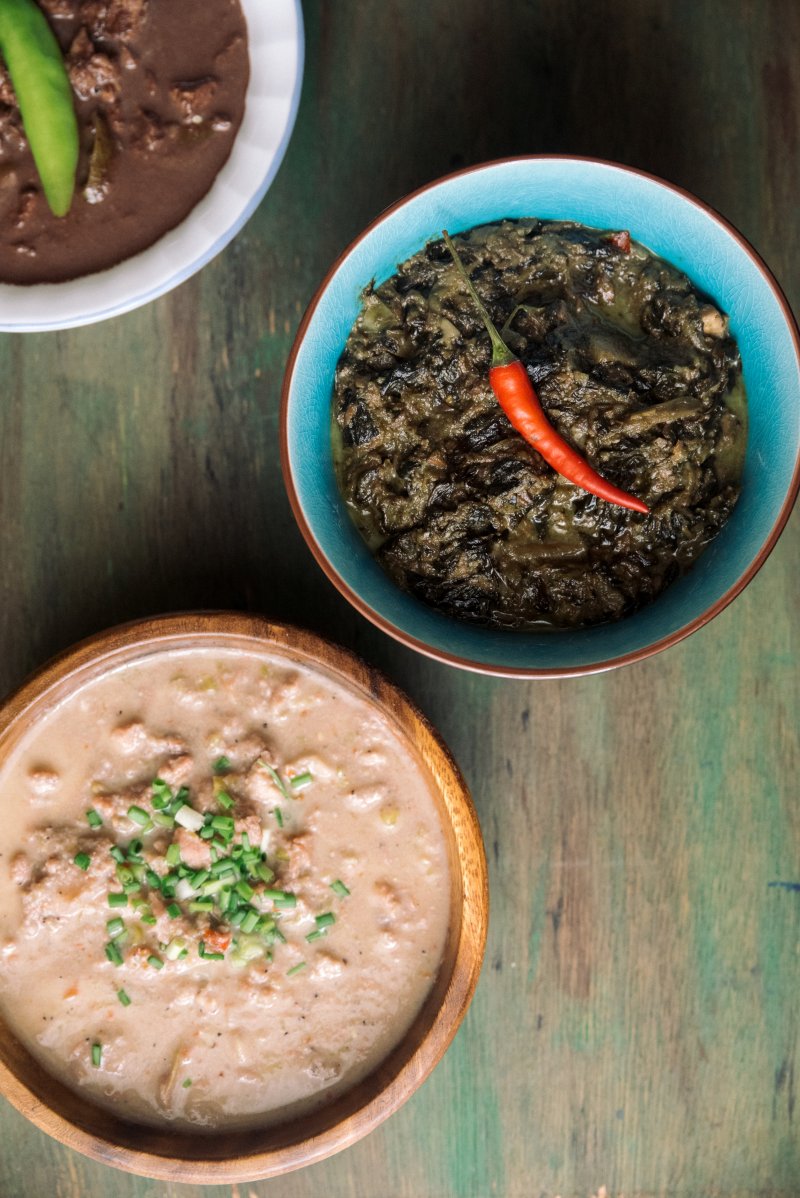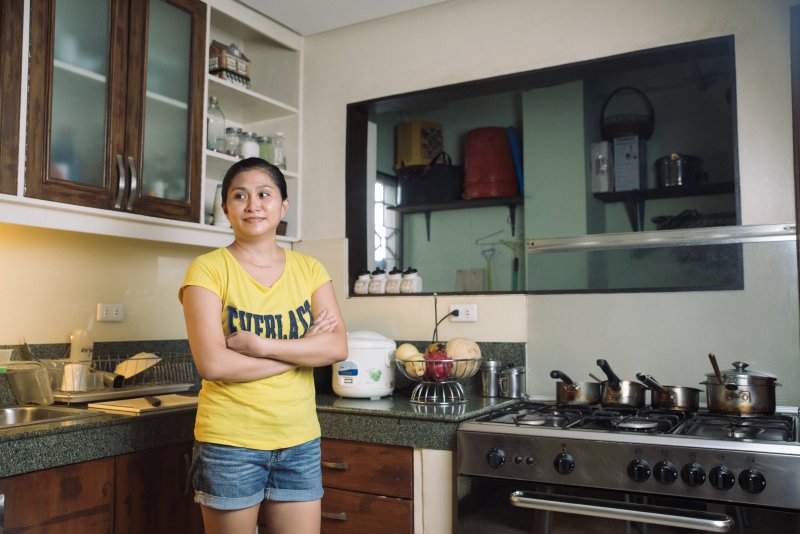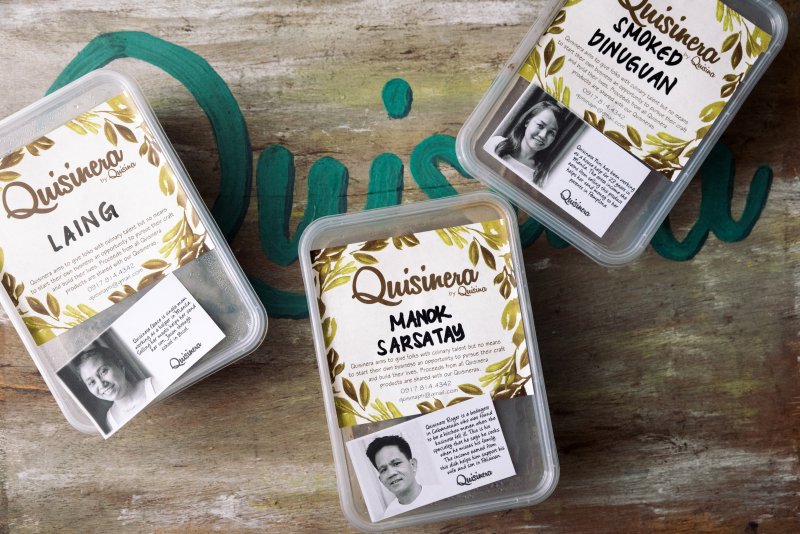Food is the ultimate diplomat.
The very notion of sharing a meal with someone suggests dialogue, communication, and communion. A business deal sealed over a traditional multi-course kaiseki in Japan; a Friday night Shabbat dinner at a hostel rooftop in Tel Aviv; a walking food tour of Binondo—these are just some of the extraordinary ways food unites people, a reminder that we’re more alike than different.
In the realm of social action and goodwill, food can also be a great platform to round up a community to do a good cause. From restaurants collaborating with charities for donation contributions to cafes cutting out the middlemen in the hope of allowing coffee farmers to earn more, a lot of civic-oriented dining and drinking are taking place these days.
It’s a trend that’s gaining traction in the local dining scene where—while it’s not unusual to see chefs dish out time, skills, and ingredients for charity-led events—there’s a growing number of entrepreneurs building food businesses largely around personal advocacies. It’s a budding movement that hopefully more people will not only take inspiration from but more importantly partake in.
Cooks for the masses


An architect by trade and a self-professed fan of reading food labels, Nina Co’s “A-ha!” moment came during late-night work sessions when she found herself relying on a dearth of unhealthy quick-meal options. Taking matters into her own hands, Co started preparing her own frozen food. She was surprised to discover that a lot of people had the same dilemma and were keen on buying her dishes as well.
“It started with friends before I consigned at a store near the architectural firm I used to work for. I would deliver frozen food before going to the office, but that was it,” she says. What used to be an alternative income stream blossomed into Quisina—a portmanteau of “quick in the kusina (kitchen)”—the small frozen food business specializing in natural nourishing food. “As an architect, I see the brand as a study in product design, and it just happened to be food. I wanted to create food as it should be: convenient, meaning there is minimal prep time and materials used, and natural, so no MSG, nitrates, preservatives, or artificial flavors,” she explains.
“I forgot how shy Filipinos can be, especially when it comes to admitting they have the talent to actually make good food,” Nina Co says.
These days, Quisina is making room for social impact and goodwill. Co recently launched Quisinera by Quisina where she collaborates with housekeepers and other low-wage earners looking to augment their income by leveraging their talent. How? By whipping up flavorful dishes unique to their hometown—from Bicol express made by Grace, a housekeeper in Manila who uses her earnings to visit the son she left in Albay to manok sarsatay by Roger, a bodegero from Cabanatuan who cooks the dish whenever he misses his family.
Quisinera not only affords consumers the chance to partake of homemade regional cuisine but also, and more importantly, acts as a platform for empowerment.
While working to add more people to her existing band of quisineras, Co was saddened when she saw how resigned these individuals were to their circumstances. “They truly believed they couldn’t rise above their situation,” says Co, adding that one challenge she did not expect was recruitment. “I thought people would be more game to earn extra, but what happened was I ended up approaching their employers first. I forgot how shy Filipinos can be, especially when it comes to admitting they have the talent to actually make good food,” she relates.
Noble cuisine
For the longest time, Filipino food has remained largely underrated compared with other Southeast Asian cuisines. Even in California where a lot of migrants from the Philippines have settled, Filipino food would only be confined within the homes of Filipino families in cities such as Los Angeles and San Francisco.
It’s a different picture these days, according to Francis Ang, the prolific chef behind Pinoy Heritage. A pop-up food business whose advocacy is serving Filipino flavors “transformed through a Californian sense of utilizing local farmers and produce” to the world stage, the brand counts itself among the instigators of the growing Filipino food movement happening in the San Francisco Bay Area.
What planted the seed for Pinoy Heritage was Ang and his wife Dian’s trip to the Philippines in 2013. Stranded in the country due to Typhoon Haiyan (Yolanda), which left a trail of devastation in its wake, the couple did their best to help feed communities by using the limited resources and food available.
Upon returning to San Francisco, Ang wanted to continue supporting displaced Filipino families by hosting a fundraiser showcasing an enticing Filipino menu at the Fifth Floor Restaurant where he used to work as executive pastry chef. A number of restaurants in San Francisco donated gift certificates to their silent auction, including Restaurant Gary Danko, Boulevard, 25 Lusk, Roka Akor, and Alexander’s Steakhouse. The collective effort not only allowed them to raise $7,000 for beneficiaries, coursed through Habitat for Humanity, but “the food was so well-received that it sparked the idea for what Pinoy Heritage is today,” says Ang.
As Francis Ang explains, “Filipino food is an evolution. It’s adapted itself to all different traders, settlers, and conquerors. By cooking Filipino food using fresh California produce, we’re instigating yet another one of its evolutions.”
Since 2015, Ang has been doing pop-ups in San Francisco, and it was during their early days that they realized “the importance and weight of representing the cuisine properly.”
In December 2015, Ang and his wife left their full-time jobs to begin their culinary voyage. “We called it the #PinoyHeritageExpedition,” says Ang of their six-month travel across different regions in the Philippines. From Tuguegarao and Ilocos to Samar and Bicol, the couple went around the Philippines, spending a lot of time in local farmers’ markets, experiencing the textures, flavors, and aromas of local produce, and gobbling up as much information as they can on regional food.
Armed with that knowledge, they returned to the US to focus solely on Pinoy Heritage. The feedback, Ang says, was so astonishing that the couple decided to travel again, this time to provinces they haven’t been to yet. “We went around Iloilo, Bacolod, Pampanga, Quezon, and Davao because we really feel it’s imperative to represent Filipino food the best we can to avoid people from being deferred to our food,” he says.
Their noble advocacy does double duty. First, it helps raise money to help the typhoon-stricken families. Then, as Ang explains, “Filipino food is an evolution. It’s adapted itself to all different traders, settlers, and conquerors. By cooking Filipino food using fresh California produce, we’re instigating yet another one of its evolutions.”
Straight to the source

A tradition in Japan usually has people uttering itadakimasu before enjoying their meals. Translated as “I humbly receive,” it is a lesson in gratitude, a way of expressing thanks to every person who played a role in serving, preparing, and cultivating the mouthwatering spread in front of the people sitting around the dining table.
Oftentimes, peoples’ gratitude bypass that last bit: the cultivator. When we eat, we’re delighting in the moment, in the delirious burst of flavor and texture enticing our palates; the last thing on our minds is the source of our food. That’s why it’s quite disheartening to learn that an increasing number of farmers, whose backbreaking labor results in the ingredients that go into the food we eat, comprise the least nourished part of society.
“There are different circumstances for farmers depending on their context,” says Charlene Tan, “but what we learned is that a lot of their income is really seasonal and tied to the traders they sell produce to. These traders set the price, often unfairly, and the farmers end up being further in debt than they already are. It’s especially hard when there’s a typhoon or if pests ruin their crop, so it’s a really vicious cycle.”
A social enterprise driven by a vision to grow a sustainable community that nourishes everyone—from the consumer to the farmer and the land from which food is cultivated—Good Food Community’s business model is simple: bring fresh, ethically sourced organic produce from smallholder farmers to your kitchen
It’s precisely this problem that Tan—whose extensive experience in non-profit work saw her interacting with farmers across the country—sought to address when she co-founded Good Food Community. A social enterprise driven by a vision to grow a sustainable community that nourishes everyone—from the consumer to the farmer and the land from which food is cultivated—Good Food Community’s business model is simple: bring fresh, ethically sourced organic produce from smallholder farmers to your kitchen.
“What we do now is deliver weekly, on Wednesdays. Subscribers log on to our website and choose to commit to one-, four-, or 12-week deliveries—it’s cheaper the longer you commit,” she says.
A caveat, though—one which Tan’s team never fails to clearly communicate—subscribers leave it to Good Food Community to mix and match the produce going into their weekly bayong (basket). “This makes it easier for us to accept smaller volumes from different farmers and distribute accordingly,” explains Tan, “because even when we plan what we will be planting with our farmers, unforeseen circumstances like frost or bad weather will render certain produce unavailable. So while every basket will weigh around 3.5 kilos, no one basket is the same. It’s always going to be a variety of fruits and leafy vegetables.”
And while they’ve had the occasional customer complaint or two, it’s been more good feedback than bad from their market. Perhaps it’s the knowledge that as subscribers are munching on organic vegetables they got from the week’s bayong, the farmers responsible for that harvest are also getting food in their bellies. With that thought, ordering a weekly basket of surprises is not such a bad tradeoff.
Originally published in F&B Report Vol. 14 No. 4





